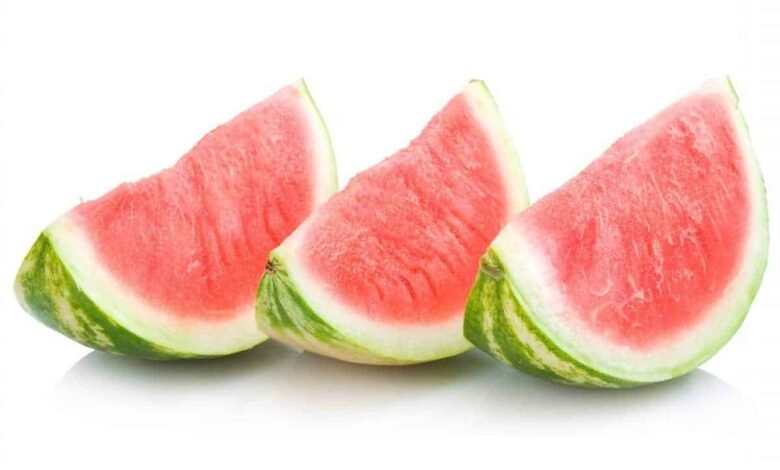5 interesting facts you didn’t know about watermelon

No other food product creates a strong summer feeling like juicy and fragrant watermelon. It has an exceptional refreshing taste and aroma, but also gives a very colorful and fresh look to the whole summer table thanks to its lively and rich colors.
The thing is, watermelon offers much more than a pleasant aroma. It comes to the table with a bunch of unsuspected benefits for our health. With its 45 calories, one serving of watermelon can fill us with 20% of the required amount of vitamin C for the day, as well as 17% of the required vitamin A.
And that’s not all. Watermelon is very rich in dietary fiber, which greatly favors digestion, as well as potassium, a mineral that helps keep blood pressure levels low. Not surprisingly, there is a whole month dedicated to watermelon – July.
Contains more lycopene than raw tomatoes
One bowl of watermelon contains 1.5 times more lycopene than the same amount of fresh tomatoes (6 mg for watermelon compared to 4 mg for tomatoes). This is very important because lycopene is considered a super antioxidant with a very strong neutralizing effect on free radicals that damage cells and weaken the immune system.
Lycopene, traditionally found in red fruits and vegetables, is widely believed to prevent a number of heart diseases and several types of cancer. To get the most out of the benefits of watermelon, it must be stored properly. Keep it in a shady and cool place, away from direct sunlight.
Watermelon juice cures muscle pain
A Spanish study shows that watermelon, and more precisely its juice, has a very soothing effect on muscles after a hard and strenuous workout. This is mainly associated with the substance citrulline, which lowers blood pressure and improves the functioning of the arteries.
The effect of calming and relaxing blood vessels even makes some American scientists believe that watermelon has an effect similar to that of Viagra. But to take advantage of this positive side of watermelon, you need to know how to do it – keep in mind that the substances that have the effect in question are mainly found in the rind.
Watermelon is both a fruit and a vegetable
On the one hand, watermelon is a fruit known for its sweet nectarine taste, but on the other hand, it can be classified as a cucurbit family, which also includes squash and the cucumber.
Watermelon is highly hydrating
Watermelon is one of the most powerful hydrating agents. Its water content reaches as much as 91.5% or more than any other fruit. This may not seem like a big deal to you, but just think about the negative effect dehydration has on the human body and we’ll talk again.
A study published in The Journal of Nutrition mentions some of the negative effects of dehydration. According to the study, even mild forms of dehydration can cause headaches, low mood, inability to concentrate and other unpleasant symptoms
Watermelon also has a yellow variety
You might not believe that there are watermelons that aren’t red or pink inside, but there really are other varieties. In fact, the yellow variety is extremely sweet, even sweeter than our familiar red watermelon, and its taste resembles honey.
Interestingly, at first glance they look exactly the same, so it’s hard to tell them apart unless the store tells you they have these watermelons. The only downside to yellow watermelon is that all studies so far have been done on red watermelons and there is virtually no information on the effects and benefits of the yellow variety.



